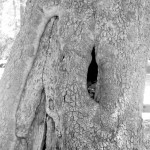People losing faith in board’s willingness to inform public
The Idyllwild Water District directors held a special meeting Wednesday, Aug. 8, to discuss the current water-quality concerns. Last month, IWD notified its customers that the sampling results for byproducts from the disinfection process were too high.
These chemicals — trihalomethanes (such as chloroform) and haloacetic acids — are formed from the reaction between chlorine, the purification chemical and natural organic material in the water. The appearance of disinfection byproducts in a district’s water supply happens throughout the country and can be corrected.
General Manager Jack Hoagland discussed the situation, explained the testing process and described the possible options for correcting the problem. The board also heard comments from the public. Hoagland, after review with the district’s consultant, will make a recommendation to resolve the problem at the Aug. 15 meeting. The board expects to approve the next actions in order to submit its report to the State Water Resources Control Board Division of Drinking Water by Sept. 10.
As he began, Hoagland emphasized that most water, which is cleaned with chlorine, will contain some disinfection byproducts. The state maximum limit for THM is 80 micrograms per liter and for HAA, the limit is 60 micrograms per liter.
In the past, IWD tested for DBP annually. When the IWD September 2017 results for HAA exceeded the limit, the state requested quarterly readings. In the latest, June 2018, both the THM and HAA results for the lower Pine Crest area exceeded the limits. Consequently, the state issued the citation, which IWD reported last month.
It is important to understand that these high readings only began in September 2017. Before that, the amount of disinfectant byproduct was well below the state maximum.
After the initial September 2017 reading, Hoagland took some steps to reduce the DBP levels. The December 2017 sampling results were within limits and seemed to indicate these actions were successful. But the March and June results were again too high.
“We did things you’re normally supposed to do. We reduced the level of chlorine applied, reduced the amount of chlorine added to the storage tanks and got pretty positive results,” he said.
Reviewing longer-term and more permanent solutions, Hoagland said he has ruled out options such as water temperature control, the time for detention and chlorine levels. The most likely option will be reducing the level of naturally occurring organic material in the water.
To accomplish this effectively, the district will likely have to purchase equipment to remove the organic matter. Fern Valley Water District took this approach in the early 2000s when a similar problem occurred there.
After Hoagland’s report, the board heard from the public. Several people expressed concern about the presence of the DBP and more felt the board should have informed the customers sooner.
President Dr. Charles “Chip” Schelly responded that the district complied with the state requirement to notify its customers after the June readings were reported.
However, many were disappointed that he relied on the letter of the law rather than being more proactive and informing the customers of the issue sooner. Some were upset that the issue remained private at the June 20 meeting, when the board raised its water rates.
“The public trust failed,” commented Vic Sirkin. “There’s no money in the budget when you knew about the problem coming down the pike. No transparency. You hid behind the law. Some board members knew, and now you’ve lost public trust.”
Another speaker felt the board was impervious to the public’s concern and unwilling to admit they could have handled it differently. “It doesn’t seem to phase you guys because you just sit there. It’s a problem. We’re p***ed! It’s not OK. And we deserve an apology!”
This comment from another person summarizes the general feeling of the meeting’s attendees: “We expect the board members to work for us, not against us. We recognize you didn’t create all these problems but we’re asking you to please work for us. Work with us; we live in the same community.”
Schelly also argued the drought was a major contributor to the high DBP. Since customers were conserving water, the chlorine remained in the pipes longer.
However, the high readings first appeared in September 2017, after a very wet winter. During the recent five-year drought, the THM and HAA readings were generally about half the current levels.
When asked about this, Schelly has not responded.
The board stressed that the high DBP levels are only in the lower Pine Crest area. The high levels are not throughout the entire water supply.
Near the end of the meeting, Jerry Buchanan urged the board to give those residents some form of rebate if they choose to purchase filters for their cooking, washing and drinking water.
As the meeting ended, several board members expressed their agreement with Buchanan’s suggestion.
“We will work as fast as we can, but we still need state approval,” advised Director Peter Szabadi. “We want to make sure it doesn’t happen again.”
He suggested the general manager inform the board whenever any water reading approaches or exceeds its maximum limit, and could become a potential violation.
“We as a board can act on it and notify the public or not notify the public. We want to make sure of complete transparency in the future about any problem that could potentially affect our health,” Szabadi urged his colleagues.
JP Crumrine can be reached at [email protected].










